

A 13-hour laboratory school study of lisdexamfetamine dimesylate in school-aged children with attention-deficit/hyperactivity disorder. This study demonstrated an onset of action for LDX at 1.5 hours (the first postdose time point measured), with duration of efficacy up to 13 hours postdose as assessed during the crossover treatment period.

The symptoms of ADHD may extend beyond the school day and continue into afterschool activities and family interactions. This trial is the first to demonstrate duration of efficacy up to 13 hours postdose compared with placebo for an approved oral ADHD stimulant medication and may provide an important treatment option for prolonged ADHD symptom control. Although pharmacokinetic (PK) data were not collected in this study, data from other studies of adults [24] and children [13] may assist in describing this extended duration of action [25].
In both studies, PK data at the 70 mg dose were reported. In healthy adult volunteers, the plasma concentrations showed intact LDX levels reaching their maximum concentration at 1.1 hours after ingestion and then declined to 0 by 5 hours postdose. Absent otoacoustic emissions predict otitis media in young Aboriginal children: A birth cohort study in Aboriginal and non-Aboriginal children in an arid zone of Western Australia. To our knowledge this is the first comprehensive investigation of middle ear health (which includes hearing assessment) conducted simultaneously in young indigenous and non-indigenous children living in an urban setting, although an Australia-wide study of Aboriginal and non-Aboriginal people of all ages was conducted 30 years ago [5].
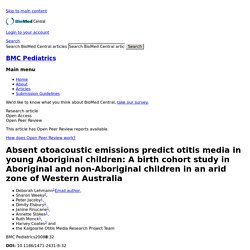
All study participants had high rates of OM but rates were particularly high in Aboriginal children, in whom disease began at a very young age, as has been reported previously [7, 9, 10]. There was significant hearing loss from age 6 months onwards, particularly in Aboriginal children, one-third of whom had hearing loss >40 dB. The general lack of symptoms with such high disease burden is of concern since families would not be prompted to bring children for medical care.
Activity-dependent formation of a vesicular inhibitory amino acid transporter gradient in the superior olivary complex of NMRI mice. Here, we report a gradient of VIAAT-ir in the LSO and SPN of NMRI mice with high expression in the lateral limb and lower expression in the medial limb.
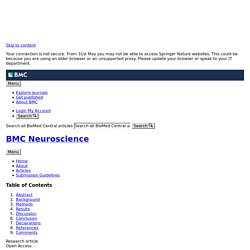
This VIAAT-gradient does not result from an increased bouton number in the lateral limb compared to the medial one as shown by quantification of boutons in the LSO (Fig. 3). The constant number of VIAAT-positive boutons in both limbs of the LSO in NMRI mice suggests a higher expression of VIAAT in single boutons of the medial limb. This can be explained by either an increased number of transporters per vesicle or by a larger vesicle pool in lateral boutons.
Tonotopic organization of the auditory system Overall, the gradient followed the medio-lateral axis of the LSO and SPN and thus their tonotopic organization as low frequencies are processed in the lateral and high frequencies in the medial part of these nuclei. ADHD candidate gene (DRD4 exon III) affects inhibitory control in a healthy sample. Advances in understanding and treating ADHD. Age-dependent plasticity in the superior temporal sulcus in deaf humans: a functional MRI study. The subjects comprised six early-deaf signers (mean age: 22.8 ± 3.1 years), five late-deaf signers (mean age: 34.4 ± 16.2 years) and six hearing signers (mean age: 33.7 ± 12.1 years; Table 1).
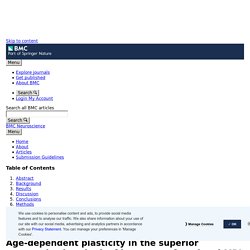
The early-deaf subjects lost their hearing before 2 years of age, whereas the late-deaf subjects became deaf after the age of 5 years. The parents of all subjects had normal hearing. None of the subjects exhibited any neurological abnormalities and all had normal MRI scans. None of the cases of deafness were due to a progressive neurological disorder. All deaf and hearing subjects were strongly right handed, except for one late-deaf subject who was ambidextrous, according to the Edinburgh handedness inventory [24]. The tasks involved the passive perception of JSL sentences that are frequently used in the deaf community. A randomized controlled trial investigation of a non-stimulant in attention deficit hyperactivity disorder (ACTION): Rationale and design.
Atomoxetine treatment and ADHD-related difficulties as assessed by adolescent patients, their parents and physicians. To our knowledge, this is the largest single study focusing on adolescent ADHD patients treated with atomoxetine [18, 19]: 159 adolescent patients with ADHD according to DSM-IV-TR were included in this open-label trial with atomoxetine in Germany.
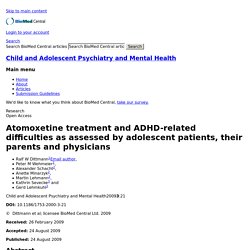
The retention rate over the 24-week course of the study was 69.8%, a result closely resembling the 6-month retention rate of 64.9% reported by Perwien et al. from an atomoxetine study in N = 912 patients aged 6–17 years [30]. Patients in this trial were treated with atomoxetine at a mean dose very close to the target dose recommended in the summary of product characteristics (SPC). The rates of psychiatric comorbidities were low compared to studies performed in children.
Atomoxetine for the treatment of Attention-Deficit/Hyperactivity Disorder (ADHD) in children with ADHD and dyslexia. Study Design This open-label, non-randomized, parallel-design pilot study was conducted from October 2003 to March 2006 at 12 centers in the United States.
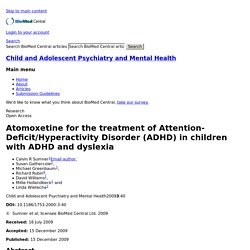
The study protocol was approved and conducted in accordance with the principles of the Declaration of Helsinki, and all parents or legal guardian(s) of the patients provided written informed consent (and patients provided assent where applicable) after the procedure(s) and possible side effects were fully explained. All patients meeting criteria received open-label treatment with atomoxetine at doses ranging from 1.0-1.4 mg/kg once daily given orally as capsules (Strattera®, Eli Lilly and Company, Indianapolis, IN, USA) for approximately 16 weeks. The maximum dose prescribed was 1.4 mg/kg or 100 mg, whichever dose was less. After initiating treatment, patients were assessed every 2 weeks for 8 weeks and then once a month for the remaining 8 weeks of the study. Patients. Autistic children at risk of being underestimated: school-based pilot study of a strength-informed assessment.
Autistic childrena who reach school age with little or no spoken language, and thus acquire labels such as ‘nonverbal’ or ‘minimally verbal’, have recently attracted concern as a neglected subgroup in autism research [1].
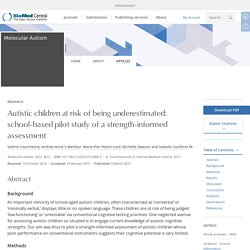
Many such children are judged ‘low-functioning’ or ‘untestable’ through conventional assessments of cognitive abilities, on which they may not achieve even a basal score. Therefore, their potential is estimated to be extremely limited. At a time when very early development dominates autism research priorities [2,3] and is widely claimed to be determinative, the difficulties faced by autistic children so situated raise important concerns.
Not only are they likely to be regarded and treated as though very low-functioning, they are in addition considered far too old for popular interventions to improve their outcomes [4]. We chose visual search [20,21] and embedded figures [22-24] tasks as the second and third tests in the pilot assessment. Brain classification reveals the right cerebellum as the best biomarker of dyslexia. Brain mapping and detection of functional patterns in fMRI using wavelet transform; application in detection of dyslexia. Description of dataset The fMRI data for both healthy and dyslexic subjects are collected using a 1.5-T General Electric echo-speed Horizon LX scanner with a birdcage head coil (GE Medical Systems, Milwaukee, WI) by Radiology Department of Wake Forest University.
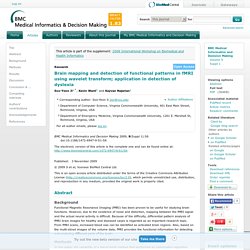
Ten fMRI scans are used for this study of which half are from healthy subjects and the rest belong to dyslexic patients. Data are collected with a word recognition stimulus, in which sixteen words are projected onto the screen for 32 seconds. A new set of words are shown to each subject every 2 seconds. No visual task is a state when the screen is blank. Figure 2. Comorbidity of Asperger's syndrome and bipolar disorder. Despite its increasing popularity as a distinct condition (included in the ICD-10 in 1993 and in the DSM-IV in 1994), the nosological status of Asperger's syndrome (AS) and its diagnostic validity remains uncertain.
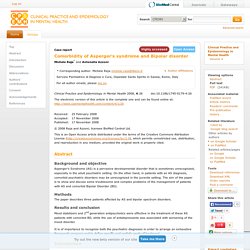
An astonishing 556% increase in pediatric prevalence of pervasive developmental disorders (PDD) has been reported between 1991 and 1997 [1]. This jump is probably due to heightened awareness and changing diagnostic criteria rather than to new environmental influences. Both AS and autism persist into adulthood, but their phenotypic expression varies with age. Developmental dyscalculia: Compensatory mechanisms in left intraparietal regions in response to nonsymbolic magnitudes. Behavior As regards behavioral data collected during scanning, overall accuracy rates were high (both groups > 90% correct) and comparable between groups (t(16) = .436; n.s.).
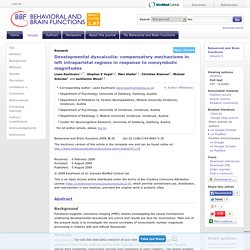
Likewise, group differences did not become significant as regards overall response latencies (t(16) = -1.366; n.s.). Both groups achieved the lowest error rates and quickest responses in the numerical task (Table 1). Although main effects of tasks were significant with respect to accuracy (F(1,16) = 7.681; p < .05) and reaction time (F(1,16) = 68.544; p < .001), the interactions group × task did not become significant (accuracy F(1,16) = .957; n.s.; reaction time F(1,16) = .522; n.s.) thus revealing comparable performance patterns between groups. Table 1. Dyspraxia and autistic traits in adults with and without autism spectrum conditions.
This study aimed to explore for the first time whether dyspraxia was significantly more prevalent in adults with ASC compared to controls without ASC and associations between dyspraxia and autistic traits in adults with and without ASC. Results showed that adults with ASC self-reported a significantly higher rate of dyspraxia (6.9%) than adults without ASC (0.8%); the relative odds of having a diagnosis of dyspraxia were 8 times higher in adults with ASC compared to controls without ASC.
These results show for the first time that the prevalence of dyspraxia is significantly higher in adults with ASC compared to controls without ASC. These findings reflect previous research, showing that motor coordination difficulties are highly prevalent in ASC [6, 7]. Early intervention: Bridging the gap between practice and academia. Prevention and early intervention have increasingly become a focus of basic and applied research in child and adolescent psychiatry.
In recent years, the emergent field of infant psychiatry has made significant progress. Many countries in the world try to invest more in prevention and intervention programs at the beginning of life, in an effort to decrease later health costs related to psychiatric disorders in childhood and adolescence [1]. Child and Adolescent Psychiatry and Mental Health provides an international forum for addressing important and timely issues in child mental health. In this context, we present a special section on early intervention in infants and preschoolers, in order to give an overview of the latest developments in this field and new research and practical reports from different settings and countries. The first roots of early intervention can already be traced in Fröbel's kindergarten movement in the beginning of the 18th century. Educating speech-language pathologists working in early intervention on environmental health.
EEG complexity as a biomarker for autism spectrum disorder risk. Effects of non-pharmacological interventions on inflammatory biomarker expression in patients with fibromyalgia: a systematic review. We aimed to assess the effects of non-pharmacological interventions on biomarkers (specifically cytokines, neuropeptides, and CRP) in patients with FM. Despite the importance of non-pharmacological interventions in FM patients, few studies have focused on changes to biomarkers after non-pharmacological intervention. In fact, to our knowledge, this is the first systematic review on this subject.
We found only 12 articles that fulfilled our inclusion criteria. EMBalance - validation of a decision support system in the early diagnostic evaluation and management plan formulation of balance disorders in primary care: study protocol of a feasibility randomised controlled trial. EMBalance is a feasibility and/or proof-of-concept study. It is designed as a non-commercial, international, multi-centre, single-blind, parallel-group randomised controlled trial (RCT) in accordance with the Standard Protocol Items: Recommendations for Interventional Trials (SPIRIT) guidelines [15] (see Additional file 1).
The EMBalance study will be carried out simultaneously in the United Kingdom, Germany, Greece and Belgium. Both primary and tertiary care settings will be involved in these four countries. Table 1 provides the names of all participating clinical centres. Examination of motor skill competency in students: evidence-based physical education curriculum. Excitatory repetitive transcranial magnetic stimulation to left dorsal premotor cortex enhances motor consolidation of new skills. Participants. Factors influencing work participation of adults with developmental dyslexia: a systematic review. Facts, values, and Attention-Deficit Hyperactivity Disorder (ADHD): an update on the controversies.
Fundamental principles by which the brain could process information: an information management perspective. Hippocampus and amygdala radiomic biomarkers for the study of autism spectrum disorder. Radiomic features, and particulary those encoding texture, enable the quantification of voxel (or pixels) inter-relationships, describing characteristics of underlying tissues that may be invisible to the human visual system [49]. How autism symptoms could develop at the neuron level: an information management perspective. Impact of attention-deficit/hyperactivity disorder on the patient and family: results from a European survey. Results from this large European parent survey demonstrate that parents report that ADHD has a significant impact on the child and their family, affecting school work, peer relationships and family relationships.
Importantly, parental assessment in this survey clearly highlights that all times of the day are challenging for children with ADHD, with the afternoon/evening period at least as problematic as the school day. Of note, parents reported that typical behaviours associated with ADHD (excessively demanding/attention-seeking, noisy/disruptive and aggressive/defiant behaviour) consistently peaked during the late afternoon/early evening period.
Insular cortex involvement in declarative memory deficits in patients with post-traumatic stress disorder. Late, not early mismatch responses to changes in frequency are reduced or deviant in children with dyslexia: an event-related potential study. Memory in language-impaired children with and without autism. Mimetic desire in autism spectrum disorder. We found that individuals with an ASD are prone to MD to a similar extent as individuals in the controls. We found no link between MD and anhedonia or social judgment associated with ASD. These results contradict the intuitive idea that the preferences of individuals with ASD are less prone to social influence. They contribute to the understanding of social influence in autism.
Morning and evening behavior in children and adolescents treated with atomoxetine once daily for Attention-Deficit/Hyperactivity Disorder (ADHD): Findings from two 24-week, open-label studies. The aim of this secondary measure analysis was to evaluate whether behavioral symptoms and ADHD-related difficulties during treatment with atomoxetine as perceived by patients, parents and physicians, differ at various times of the day.
Motor imagery training for children with developmental coordination disorder – study protocol for a randomized controlled trial. Children with Developmental Coordination Disorder (DCD) show motor performance that is substantially below expected levels, given the child’s chronologic age and previous opportunities for skill learning [1]. The prevalence estimate for DCD is 5–6 % [2], and a prerequisite for a diagnosis DCD is that these problems with motor skills are significant enough to interfere with both social and academic functioning. Neural patterns elicited by sentence processing uniquely characterize typical development, SLI recovery, and SLI persistence.
Correct verb (verb agreement violation, semantic violation) 1. Every day, the horses gallop (gallops, sing) to the top of the hill. 2. Every day, the canaries sing (sings, gallop) at the top of their lungs. Neurodevelopment for syntactic processing distinguishes childhood stuttering recovery versus persistence. Neurogenomics of speech and language disorders: the road ahead. Orthographic familiarity, phonological legality and number of orthographic neighbours affect the onset of ERP lexical effects.
Paths to language development in at risk children: a qualitative comparative analysis (QCA) Phonological spelling errors in the writing of Greek dyslexic children: in support of the phonological deficit theory. Psychiatric and psychosocial problems in adults with normal-intelligence autism spectrum disorders. Recent advances in the genetics of language impairment. Relationship between cognitive function and prevalence of decrease in intrinsic academic motivation in adolescents. Review of neuroimaging in Autism Spectrum Disorders: what have we learned and where we go from here.
Social (pragmatic) communication disorder: a research review of this new DSM-5 diagnostic category. Stereoscopic processing of crossed and uncrossed disparities in the human visual cortex. Subcortical processing of speech regularities underlies reading and music aptitude in children. The clinical effectiveness of different parenting programmes for children with conduct problems: a systematic review of randomised controlled trials. The differential diagnosis of children with joint hypermobility: a review of the literature.
The ongoing dissection of the genetic architecture of autistic spectrum disorder. The relationship between joint mobility and motor performance in children with and without the diagnosis of developmental coordination disorder. The role of nonverbal working memory in morphosyntactic processing by children with specific language impairment and autism spectrum disorders. The spatio-temporal dynamics of deviance and target detection in the passive and active auditory oddball paradigm: a sLORETA study. Top-down and bottom-up modulation in processing bimodal face/voice stimuli. Working memory training for adult hearing aid users: study protocol for a double-blind randomized active controlled trial.